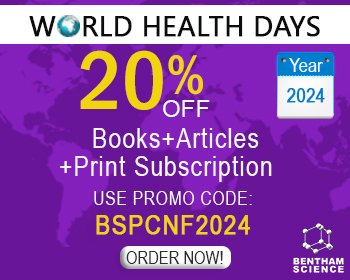Abstract
C-reactive Protein (CRP) is an acute phase reactant, belonging to the pentraxin family of proteins. Its level rises up to 1000-fold in response to acute inflammation. High sensitivity CRP level is utilized as an independent biomarker of inflammation and cardiovascular disease. The accumulating data suggests that CRP has two distinct forms. It is predominantly produced in the liver in a native pentameric form (nCRP). At sites of local inflammation and tissue injury it may bind to phosphocholine-rich membranes of activated and apoptotic cells and their microparticles, undergoing irreversible dissociation to five monomeric subunits, termed monomeric CRP (mCRP). Through dissociation, CRP deposits into tissues and acquires distinct proinflammatory properties. It activates both classic and alternative complement pathways, binding complement component C1q and factor H. mCRP actively participates in the development of endothelial dysfunction. It activates leukocytes, inducing cytokine release and monocyte recruitment. It may also play a role in the polarization of monocytes and T cells into proinflammatory phenotypes. It may be involved in low-density lipoproteins (LDL) opsonization and uptake by macrophages. mCRP deposits were detected in samples of atherosclerotic lesions from human aorta, carotid, coronary and femoral arteries. mCRP may also induce platelet aggregation and thrombus formation, thus contributing in multiple ways in the development of atherosclerosis and atherothrombosis. In this mini-review, we will provide an insight into the process of conformational rearrangement of nCRP, leading to dissociation, and describe known effects of mCRP. We will provide a rationalization for mCRP involvement in the development of atherosclerosis and atherothrombosis.
Keywords: Monomeric C-reactive protein, modified C-reactive protein, inflammation, atherosclerosis, atherothrombosis, dissociation, complement.
[http://dx.doi.org/10.1084/jem.52.4.561] [PMID: 19869788]
[http://dx.doi.org/10.1161/01.CIR.0000053730.47739.3C] [PMID: 12551853]
[http://dx.doi.org/10.1161/01.CIR.0000052939.59093.45] [PMID: 12551878]
[http://dx.doi.org/10.1056/NEJMoa0807646] [PMID: 18997196]
[http://dx.doi.org/10.1056/NEJMoa1707914] [PMID: 28845751]
[http://dx.doi.org/10.1155/2015/372432] [PMID: 26089599]
[http://dx.doi.org/10.1161/CIRCULATIONAHA.113.007124] [PMID: 24982116]
[http://dx.doi.org/10.1016/S0162-3109(99)00007-7] [PMID: 10408362]
[http://dx.doi.org/10.1016/j.vph.2015.05.001] [PMID: 25962566]
[http://dx.doi.org/10.1161/ATVBAHA.111.225508] [PMID: 21415385]
[http://dx.doi.org/10.1016/j.jacc.2005.06.017] [PMID: 16168299]
[http://dx.doi.org/10.1007/BF00731355] [PMID: 7620328]
[http://dx.doi.org/10.1177/153537020523001010] [PMID: 16246904]
[PMID: 8648129]
[http://dx.doi.org/10.1038/nsb0496-346] [PMID: 8599761]
[http://dx.doi.org/10.1016/S0969-2126(99)80023-9] [PMID: 10368284]
[http://dx.doi.org/10.1016/S0167-5699(97)01002-5] [PMID: 9078682]
[http://dx.doi.org/10.1097/SAP.0b013e3181f77ba5] [PMID: 21508818]
[PMID: 2005402]
[http://dx.doi.org/10.1096/fj.06-6722com] [PMID: 17116742]
[http://dx.doi.org/10.1042/bj20020492] [PMID: 12102655]
[http://dx.doi.org/10.1096/fj.08-116962] [PMID: 19136614]
[http://dx.doi.org/10.1074/jbc.M114.555318] [PMID: 24711458]
[http://dx.doi.org/10.4049/jimmunol.166.6.3998] [PMID: 11238646]
[http://dx.doi.org/10.1161/01.ATV.0000206211.21895.73] [PMID: 16456095]
[http://dx.doi.org/10.1161/ATVBAHA.110.205377] [PMID: 20339115]
[http://dx.doi.org/10.1038/srep22889] [PMID: 26961257]
[http://dx.doi.org/10.1074/jbc.M205378200] [PMID: 12198121]
[http://dx.doi.org/10.1016/j.cyto.2014.05.027] [PMID: 24972386]
[http://dx.doi.org/10.1161/01.STR.0000217386.37107.be] [PMID: 16601222]
[http://dx.doi.org/10.1002/path.4766] [PMID: 27376713]
[http://dx.doi.org/10.1038/srep13281] [PMID: 26335098]
[http://dx.doi.org/10.1111/j.1750-3639.2011.00539.x] [PMID: 21951392]
[http://dx.doi.org/10.1093/ndt/gfg407] [PMID: 14551357]
[http://dx.doi.org/10.1111/j.1750-3639.2008.00256.x] [PMID: 19170684]
[http://dx.doi.org/10.1093/cvr/cvs237] [PMID: 22798388]
[http://dx.doi.org/10.1038/35036052] [PMID: 11413487]
[http://dx.doi.org/10.1161/01.CIR.0000125527.41598.68] [PMID: 15051635]
[http://dx.doi.org/10.1007/s00395-011-0191-y] [PMID: 21562922]
[http://dx.doi.org/10.1161/CIRCINTERVENTIONS.108.788745] [PMID: 20031679]
[http://dx.doi.org/10.1186/1471-2121-9-47] [PMID: 18764931]
[http://dx.doi.org/10.1083/jcb.125.4.917] [PMID: 7514607]
[http://dx.doi.org/10.1161/01.RES.0000267745.03488.47] [PMID: 17446434]
[http://dx.doi.org/10.5551/jat.3004] [PMID: 20173307]
[http://dx.doi.org/10.1161/01.RES.0000183881.11739.CB] [PMID: 16123332]
[http://dx.doi.org/10.1093/eurheartj/ehx244] [PMID: 30052884]
[http://dx.doi.org/10.1016/j.biocel.2004.07.002] [PMID: 15474978]
[http://dx.doi.org/10.4049/jimmunol.167.9.5355] [PMID: 11673552]
[http://dx.doi.org/10.3389/fimmu.2015.00571] [PMID: 26635790]
[PMID: 27738646]
[http://dx.doi.org/10.1042/bj20020045] [PMID: 12033985]
[http://dx.doi.org/10.1016/j.bbrc.2005.02.091] [PMID: 15766555]
[http://dx.doi.org/10.1016/j.biocel.2005.11.004] [PMID: 16376133]
[http://dx.doi.org/10.1016/j.atherosclerosis.2012.07.039] [PMID: 22901456]
[http://dx.doi.org/10.1161/01.CIR.103.9.1194] [PMID: 11238260]
[http://dx.doi.org/10.1161/01.ATV.0000104014.24367.16] [PMID: 14592848]
[http://dx.doi.org/10.1161/01.ATV.0000081637.36475.BC] [PMID: 12805076]
[http://dx.doi.org/10.1016/j.jvs.2005.03.060] [PMID: 16102622]
[http://dx.doi.org/10.1161/01.STR.0000150643.08420.78] [PMID: 15576654]
[http://dx.doi.org/10.1161/01.CIR.0000092184.43176.91] [PMID: 12975260]
[http://dx.doi.org/10.1161/ATVBAHA.108.174359] [PMID: 18787187]
[http://dx.doi.org/10.1016/j.atherosclerosis.2015.01.024] [PMID: 25682033]
[http://dx.doi.org/10.1111/j.1538-7836.2008.03244.x] [PMID: 19036073]
[http://dx.doi.org/10.1093/cvr/cvr226] [PMID: 21859817]
[http://dx.doi.org/10.1161/01.RES.0000163015.67711.AB] [PMID: 15774855]
[http://dx.doi.org/10.1172/JCI200318921] [PMID: 12813013]
[http://dx.doi.org/10.1155/2014/683598] [PMID: 24872599]
[http://dx.doi.org/10.1161/01.ATV.0000164623.41250.28] [PMID: 15802626]
[http://dx.doi.org/10.1161/01.ATV.0000142807.92781.d9] [PMID: 15319265]
[http://dx.doi.org/10.1111/j.1600-0609.2006.00808.x] [PMID: 17253971]


























